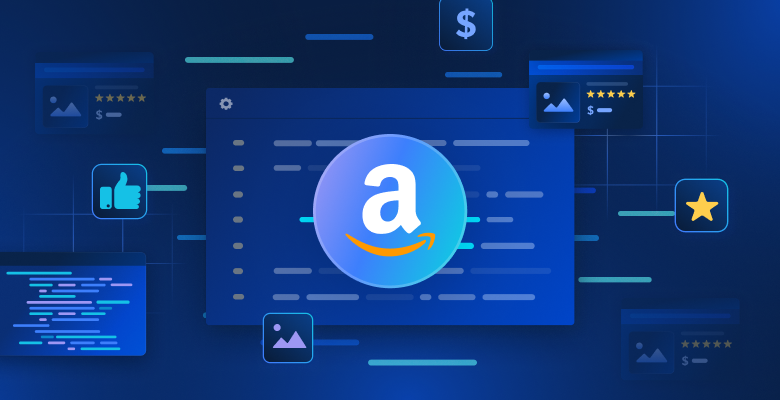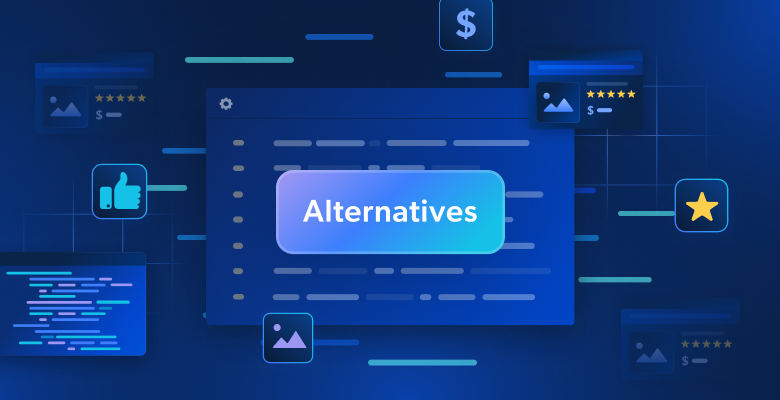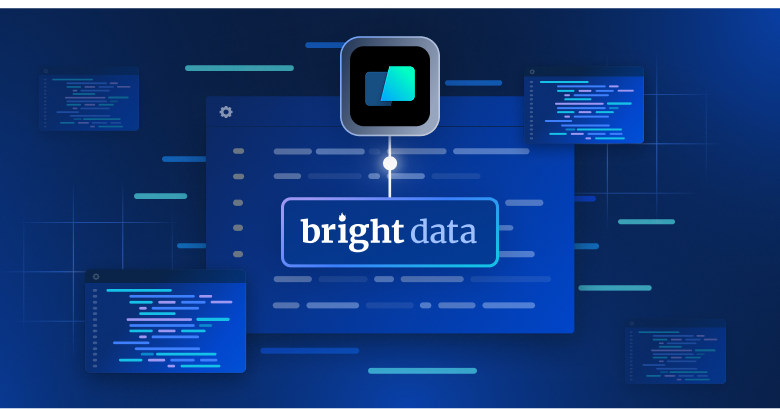Read this article to become an expert in aggregating data. Below, you will see:
- Data Aggregation: Definition
- How a Data Aggregation Process Works
- Uses Cases for Data Aggregation
- Why Data Aggregation Is Important
- Challenges in Data Aggregation
- Data Aggregation With Bright Data
Data Aggregation: Definition
Data aggregation is the process of collecting data from one or more sources to combine it into a summary form. In other words, data aggregation involves retrieving individual data from multiple sources to organize it into a simplified form, such as totals or useful stats. Even though data is generally aggregated through the count, sum, and mean operators, you can also aggregate non-numeric data.
Data aggregation is about collecting data from different databases, spreadsheets, or the web and then summarizing it into a single report, dataset, or view. This process is performed by data aggregators. In detail, an aggregation tool accepts heterogeneous data as input. Then, it elaborates on it to produce aggregated results. Finally, it offers features to present and explore the resulting aggregated data.
Aggregating data is particularly useful for data analysis because it allows large amounts of data to be examined at a glance. This is because one row of aggregated data can summarize hundreds, thousands, or even millions of single data records.
Let’s now understand how to do data aggregation.
Key Points & Takeaways
- Simplifies Complex Data Analysis: Aggregating data transforms detailed datasets into summarized forms, making it easier to identify trends and insights at a glance.
- Enhances Decision-Making: By providing a consolidated view of data from multiple sources, data aggregation supports informed decision-making with a comprehensive understanding of information.
- Improves Efficiency: Automating the data aggregation process reduces manual effort and time spent on data collection and preparation, leading to increased operational efficiency.
How a Data Aggregation Process Works
Typically, an aggregation process consists of the following three steps:

- Retrieving data from multiple sources: A data aggregator gathers data from several sources, such as different databases, spreadsheets, and HTML files.
- Cleaning and preparing the input data: The collected data is filtered and preprocessed to remove any inconsistencies, errors, or invalid values. This step ensures that the data is accurate and consistent before being aggregated. Next, the filtered data is converted into a format that makes aggregation easier.
- Combining and organizing data: The processed data is merged into a single dataset. The final step involves joining, concatenating, and summarizing data into a meaningful and easier-to-read form. Generally, this process includes producing simplified views, calculating summary statistics, or creating pivot tables.
Keep in mind that there are several aggregation technologies and tools available. These allow you to aggregate data in various ways, depending on the input format and the desired outcome. Then, the aggregated data is stored in a data warehouse for data analysis or is used to make decisions at the business level.
Now that you know how to aggregate data, let’s see in what scenarios this comes in handy.
Uses Cases for Data Aggregation
Aggregated data can be applied successfully in several industries, such as:
- Finance: Financial institutions aggregate data from various sources to assess the creditworthiness of their customers. For example, they use it to decide whether or not to grant a loan. Also, aggregated data is useful for studying and identifying stock market trends.
- Healthcare: Medical facilities use data aggregated from health records, health tests, and lab results to make treatment decisions and improve care coordination.
- Marketing: Businesses aggregate data collected from company websites and social media platforms to monitor mentions, hashtags, and engagement. This is how you can understand if a marketing campaign worked. Plus, sales and customer data is aggregated to make business decisions for upcoming marketing campaigns.
- Application Monitoring: Software periodically collects and aggregates application and network data to monitor application performance, discover new bugs, and troubleshoot issues.
- Big Data: Aggregating data makes it easier to analyze the data available globally and store it in a data warehouse for future use.
Why Data Aggregation Is Important
Let’s look at the three main benefits that come from aggregating data.
Data Analysis Becomes Easier
The main goal behind aggregation is to support data analysis. Specifically, analyzing aggregate data makes it easier to reveal insights that would be difficult to spot in raw data. This is because aggregated data is easier to analyze, read, and understand than raw data.
With just a few statistics or KPIs (Key Performance Indicators), you have everything you need to understand market trends and monitor business processes. Plus, most popular aggregators offer features to present data in different ways. Thanks to this, even non-technical can explore and use aggregated data.
Improved Efficiency and Data Quality
Data aggregators enable you to automatically collect, clean, and summarize data. Then, you can share aggregated data among different teams, enabling collaboration. This reduces manual labor and communication overhead, saving you time, energy, and money.
Also, before aggregating data, you need to clean it. This helps you detect and address errors and inconsistencies in your data. So, aggregation improves the quality and reliability of the data, increasing its value accordingly.
Better Decision-Making
By collecting and summarizing data from different sources, aggregation allows users to see the big picture. Thus, you can use aggregate data to back your decision. In particular, data-driven decisions offer several benefits, such as making more confident choices and cutting costs.
Aggregated data supports decision-making and makes it easier. Not coincidentally, data aggregation is at the heart of business intelligence, which is the process of using data to gain insights and make strategic decisions.
Challenges in Data Aggregation
Aggregating data brings many advantages but also comes with a few pitfalls. Let’s now take a look at the three most important challenges.
Integrating Different Types of Data
Data to aggregate usually come from many sources. Thus, chances are that input data have very different formats. In this case, the data aggregator has to process, standardize, and transform the data before aggregating it. This task can become very complex and time-consuming, especially dealing with Big Data or very complex datasets.
For this reason, it is recommended to parse the data before aggregating it. Specifically, data parsing is about transforming raw data into an easier-to-use format.
Ensuring Legal, Regulatory, and Privacy Compliance
When dealing with data, you should always take privacy into consideration. This is especially true when it comes to aggregation. The reason is that you may need to use PII (Personal Identifiable Information) to produce a summary representing a group as a whole. For example, this is what happens when producing the public results of an election or a poll.
Thus, data aggregation is often associated with data anonymization. Failing to comply with privacy regulations can lead to legal issues and fines. Ignoring the GDPR (General Data Protection Regulation), the privacy regulation for the data of EU citizens, can cost you more than $20 million. Even though protecting sensitive data is a major challenge in aggregation, you have no real choice.
Producing Quality Results
The reliability of the results of a data aggregation process depends on the source data. Therefore, you must first make sure that the collected data is accurate, complete, and relevant. As you can imagine, this is not easy. For example, imagine ensuring that the data chosen represent a good sample for the population under study. That is without a doubt a difficult task.
Also, keep in mind that the results of aggregation change according to granularity. If you are not familiar with this concept, granularity determines how the data will be grouped and summarized. If the granularity is too high, you lose sight of the context. If the granularity is too low, you cannot see the big picture. So, the level of granularity to use depends on the results you want to achieve. Finding the right granularity for your goals may take several attempts.
Data Aggregation With Bright Data
As we learned earlier, a data aggregation process starts with retrieving data from different sources. A data aggregator can use previously collected data or retrieve it directly on-the-fly. What is important to keep in mind is that the results of aggregation will depend on the quality of that data. This means that data collection plays a key role in aggregation.
Fortunately, Bright Data provides dedicated solutions for all the different stages of data collection. In detail, Bright Data offers a complete Web Scraper IDE. With such a tool, you can retrieve tons of data from the web while avoiding all the challenges of web scraping. You can use Bright Data’s Web Scraper IDE to collect data in the first step of an aggregation process. Also, Bright Data comes with structured and ready-to-use datasets. Buy them to directly skip all data collection steps, making the aggregation process much easier.
You can then use these datasets in a variety of scenarios. Specifically, most hospitality brands rely on Bright Data’s expertise in travel data aggregation to provide their web data. This aggregated data help them compare prices with competitors, monitor how customers are searching and planning trips, and predict upcoming travel industry trends. This is just one of many industries where Bright Data’s features, expertise, and data can make a difference.
Conclusion
Data aggregation allows you to get the most out of your data. By aggregating your data in reports and views, you can easily find out trends and insights. Also, you can use aggregated data to back your business decision. This is possible only if the results of the aggregation are reliable, which depends on the quality of the source data. This is why you need to focus on data collection, and a solution like Bright Data’s web scraping tool offers everything you need to retrieve the data you need. Otherwise, you can directly buy one of the many high-quality datasets offered by Bright Data.






